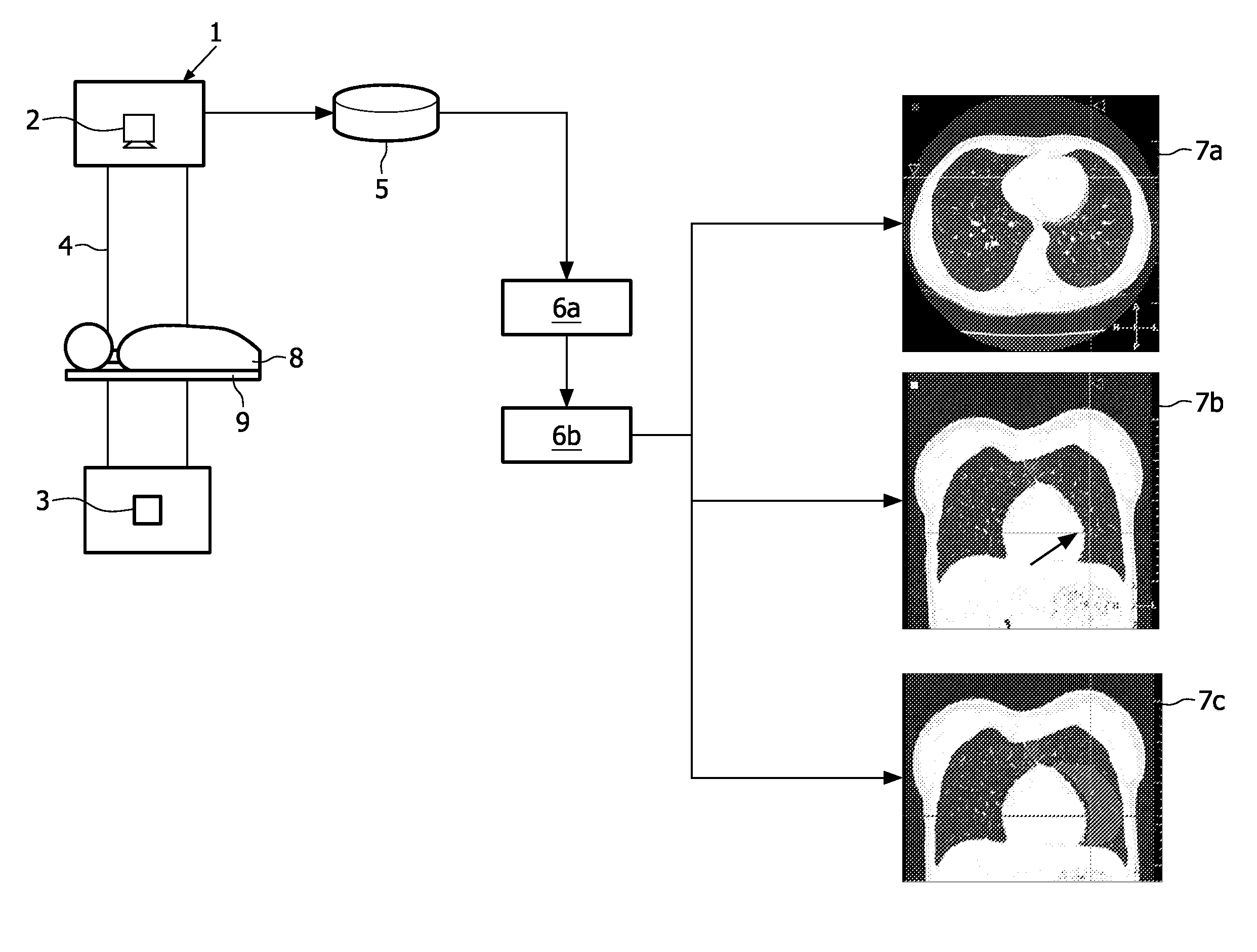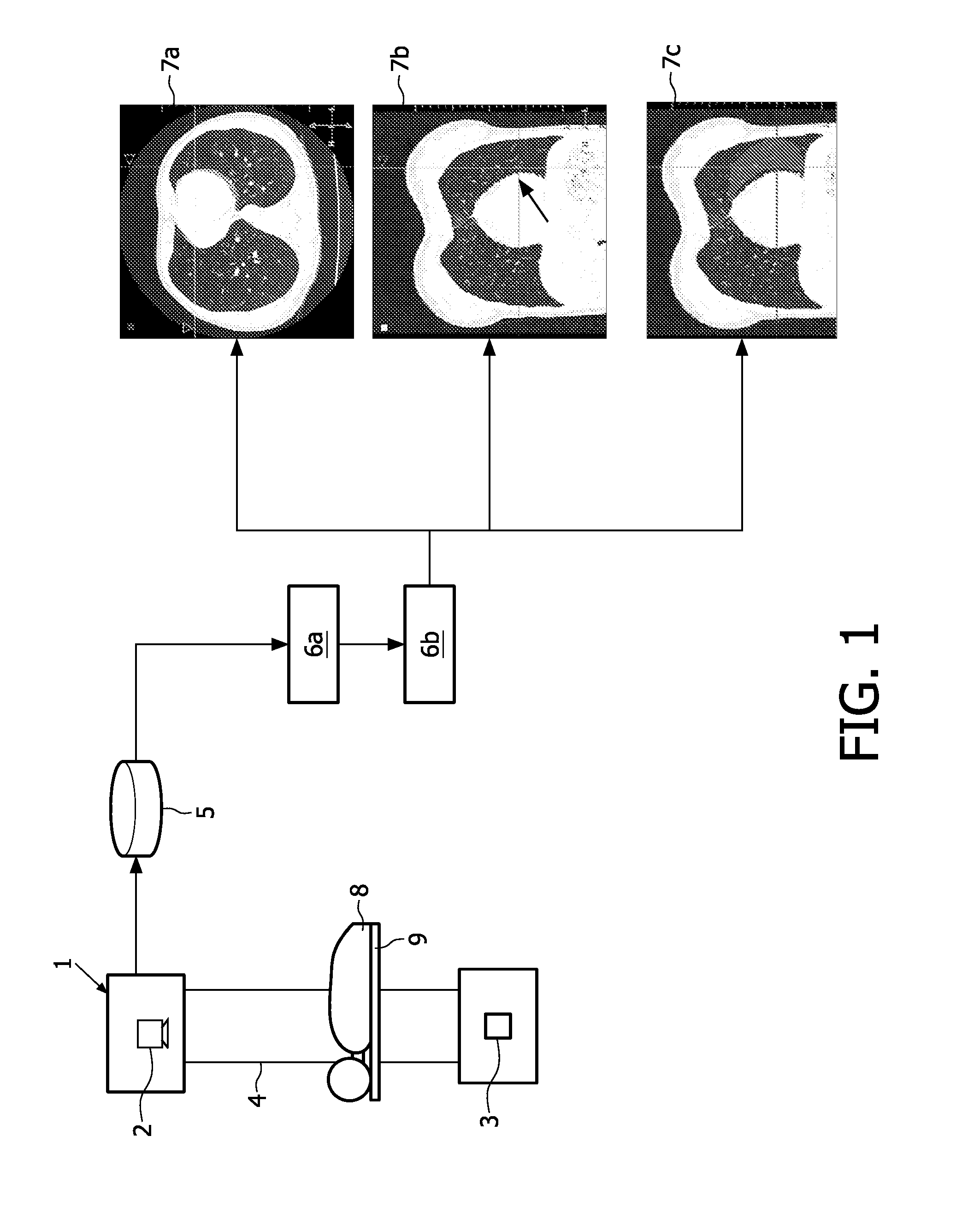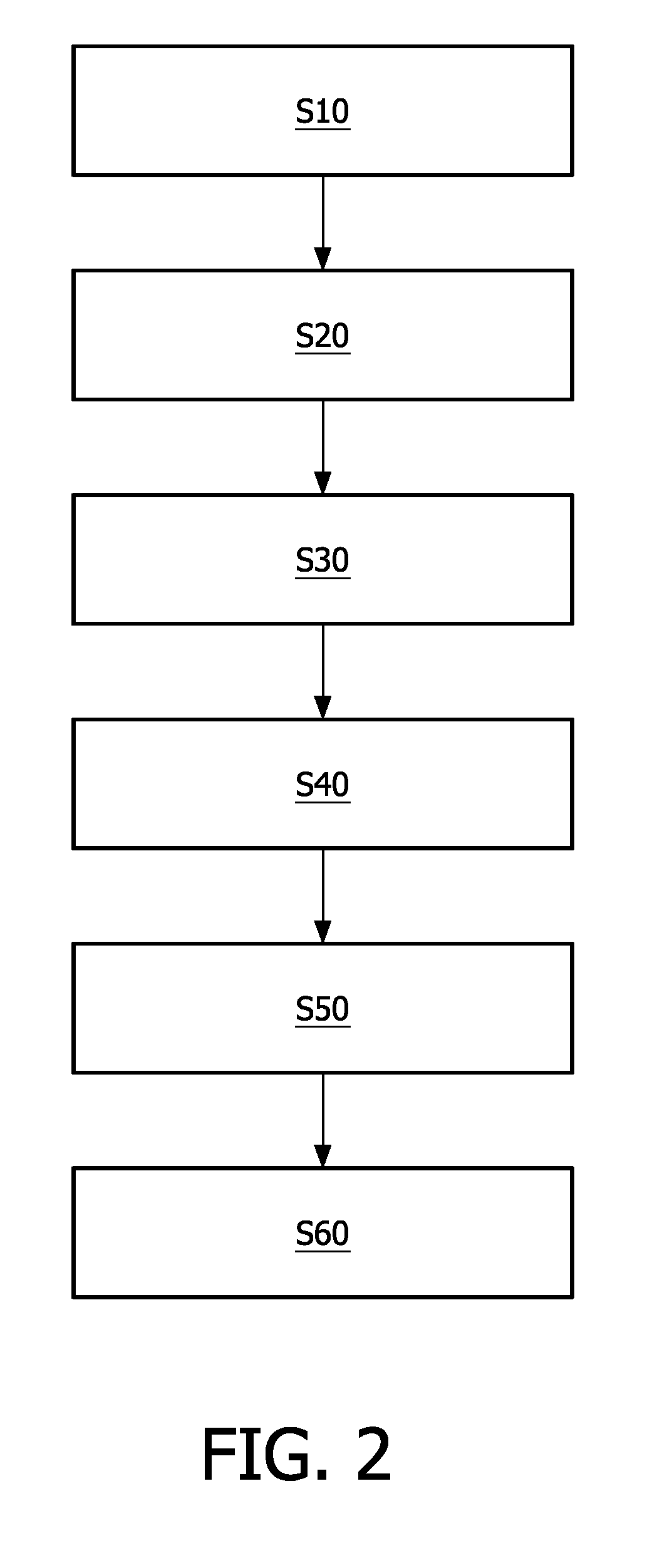Apparatus and method for indicating likely computer-detected false positives in medical imaging data
- Summary
- Abstract
- Description
- Claims
- Application Information
AI Technical Summary
Benefits of technology
Problems solved by technology
Method used
Image
Examples
Embodiment Construction
[0030]Referring to FIG. 1, a medical imaging data processing apparatus has a computer tomography (CT) imaging apparatus 1, x-ray sources 2 and detectors 3 arranged in opposed pairs around a circular frame 4. A processor 5 is adapted to execute at least a first computer code 6a and a second computer code 6b producing medical imaging data 7a, 7b and 7c that is displayed on a display device (not shown) in order to assist a physician or radiologist to identify and / or classify features of interest.
[0031]A patient 8 is supported on a platform 9 which can be moved in the longitudinal axis of the platform 9 relative to the frame 4 by means of a motor (not shown) under the control of a control unit (not shown). Data detected by the detectors 3 is input to the processor 5. The processor 5 processes the data received using first computer code 6a and second computer code 6b to provide imaging data output 7a, 7b or 7c. The image data output 7a, 7b or 7c is displayed by a display unit (not shown)...
PUM
 Login to View More
Login to View More Abstract
Description
Claims
Application Information
 Login to View More
Login to View More - R&D
- Intellectual Property
- Life Sciences
- Materials
- Tech Scout
- Unparalleled Data Quality
- Higher Quality Content
- 60% Fewer Hallucinations
Browse by: Latest US Patents, China's latest patents, Technical Efficacy Thesaurus, Application Domain, Technology Topic, Popular Technical Reports.
© 2025 PatSnap. All rights reserved.Legal|Privacy policy|Modern Slavery Act Transparency Statement|Sitemap|About US| Contact US: help@patsnap.com



